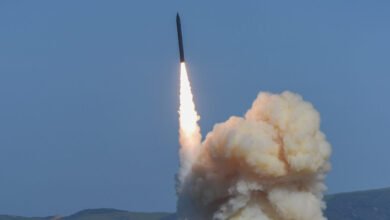Rocket Report: Wallops’ Future Plans; SpaceX Salvages Rocket Debris

▼ Summary
– The Pentagon’s Golden Dome missile defense system will rely heavily on commercial rockets to launch its space-based components, including interceptors designed as flying fuel tanks with engines.
– Golden Dome’s development faces two major technical challenges: command-and-control systems and space-based interceptors, with the former considered more quickly solvable.
– Space-based interceptors present significant hurdles, particularly in terms of economic feasibility and scalability, despite proven physics.
– Military officials estimate thousands of space-based interceptors may be needed for Golden Dome, raising concerns about industrial capacity and raw material availability.
– The Rocket Report invites reader submissions and provides updates on various rocket categories and upcoming launches, encouraging subscriptions for regular updates.
The Pentagon’s ambitious Golden Dome missile defense initiative is driving demand for commercial launch services and innovative space-based technologies. This strategic shield relies heavily on rockets to deploy critical components like sensors, command systems, and satellites into orbit. Among its most complex elements are space-based interceptors, essentially maneuverable fuel tanks with propulsion systems designed to neutralize threats. With tight deadlines looming, military leaders face significant hurdles in scaling production while controlling costs.
Reader contributions remain vital to these reports. Subscribers receive regular updates covering developments across small, medium, and heavy-lift launch vehicles, along with previews of upcoming missions. Missile defense updates feature prominently, given their growing importance in national security strategies.
Developing effective space-based interceptors presents a unique blend of technical and logistical challenges. Gen. Michael Guetlein, overseeing Golden Dome’s implementation, emphasizes that while the underlying physics are sound, mass-producing these systems economically remains unproven. “The real test,” he notes, “isn’t whether the technology works, it’s whether we can manufacture thousands of satellites quickly without exhausting resources or industrial capacity.” Analysts speculate the program may require a constellation numbering in the thousands, though official figures remain undisclosed.
Beyond engineering hurdles, the project faces pressure to demonstrate progress before political timelines shift. Scaling production to meet demand involves securing supply chains, expanding manufacturing capabilities, and ensuring raw material availability, a multifaceted problem with no simple solutions. As Golden Dome evolves, its success will hinge on balancing innovation with practical execution.
(Source: Ars Technica)







